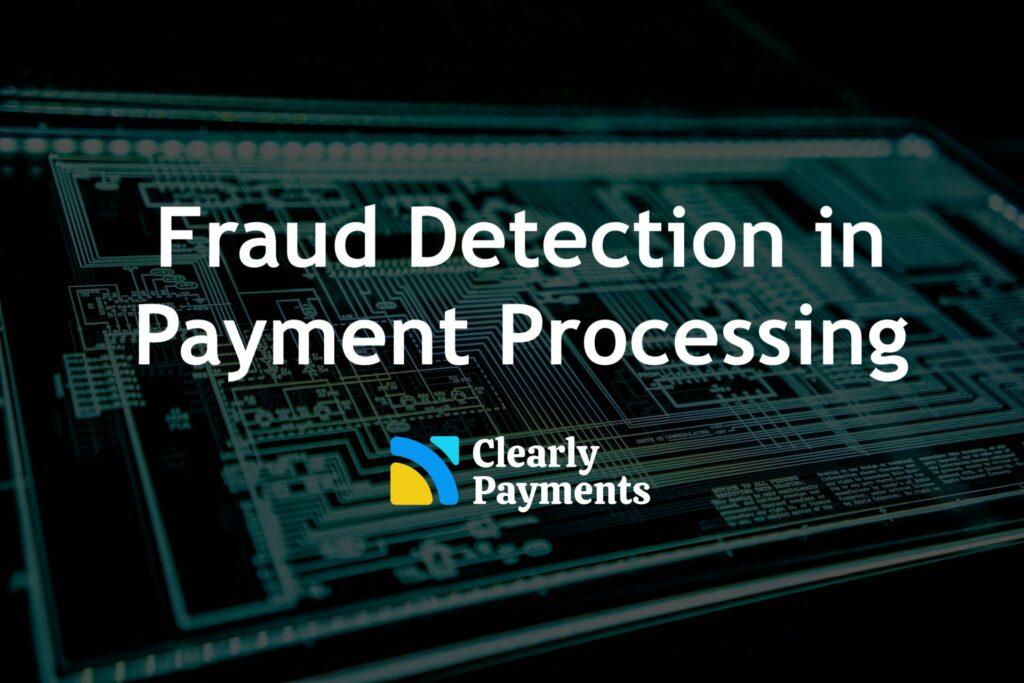Fraud detection is of the utmost importance in the payments industry as it helps to protect both merchants and customers from financial losses. This is particularly important in online payments, because that is where most payment fraud takes place. Fraudulent transactions can occur in various forms, such as credit card fraud, identity theft, and account takeover and it is crucial that merchants use payment processors with robust fraud detection systems to identify and prevent these types of fraud.
What is fraud detection in payments?
Fraud detection in payments refers to the process of identifying and preventing fraudulent transactions. This can include a variety of different types of fraud, such as credit card fraud, identity theft, and account takeover. Fraud detection systems use a combination of techniques to identify and prevent fraudulent transactions, including machine learning algorithms, rule-based systems, and behavioral analysis.
One of the most common techniques used in fraud detection is machine learning. Machine learning algorithms can be trained to identify patterns and anomalies in transactions data, which can help to identify fraudulent transactions. For example, a machine learning algorithm may be able to identify a pattern of transactions from a single IP address that is indicative of fraudulent activity.
Another technique used in fraud detection is rule-based systems. Rule-based systems use predefined rules to identify and flag potentially fraudulent transactions. For example, a rule-based system may flag a transaction as potentially fraudulent if the billing address does not match the shipping address.
Behavioral analysis is also used in fraud detection. This involves analyzing the behavior of customers during the transaction process to identify potentially fraudulent activity. For example, behavioral analysis may be used to identify customers who are logging into their account from an unusual location or device.
Fraud detection systems can also use other techniques such as velocity checking, which checks the number of transactions coming from a specific IP address or device in a set time frame. Additionally, some systems also use biometric or multi-factor authentication methods such as facial recognition, fingerprint or SMS verification to ensure that the person making the transaction is the legitimate cardholder.
Benefits of fraud detection in payments
One of the key benefits of fraud detection is that it helps to protect merchants from financial losses. Fraudulent transactions can result in chargebacks, which can be costly for merchants. Chargebacks occur when a customer disputes a charge on their credit card statement and the issuer of the card refunds the customer’s money. This not only results in a loss of revenue for the merchant, but it can also result in additional fees and penalties. Fraud detection systems can help to identify and prevent fraudulent transactions before they occur, thereby reducing the risk of chargebacks.
Fraud detection systems can also help to protect customers from financial losses. Fraudulent transactions can result in unauthorized charges on a customer’s credit card or bank account. In some cases, this can result in customers being held liable for the charges. Fraud detection systems can help to identify and prevent fraudulent transactions, thereby reducing the risk of customers being held liable for unauthorized charges.
Another benefit of fraud detection is that it can improve the customer experience. Fraud detection systems can help to identify and prevent fraudulent transactions quickly, which can prevent delays in processing transactions. Additionally, by reducing the risk of chargebacks and unauthorized charges, fraud detection systems can help to build trust with customers and improve customer satisfaction.
Fraud detection systems can also help to improve the efficiency of the payments process. By identifying and preventing fraudulent transactions, fraud detection systems can reduce the need for manual reviews and investigations, which can save time and resources. Additionally, fraud detection systems can help to automate the process of identifying and preventing fraudulent transactions, which can improve efficiency.
The future of fraud detection in payments
The future of fraud detection in payments is likely to be shaped by a number of emerging technologies, including artificial intelligence (AI), biometrics, and blockchain. These technologies have the potential to improve the accuracy and efficiency of fraud detection, while also providing new ways to protect against fraud.
One of the most significant trends in fraud detection is the use of AI. AI-powered systems can analyze large amounts of data and identify patterns that indicate fraudulent activity. For example, AI-powered systems can analyze transaction data to identify patterns of fraudulent activity or anomalies that might indicate a fraudulent transaction.
Another trend in fraud detection is the use of biometrics. Biometric authentication methods, such as fingerprint or facial recognition, can be used to confirm the identity of the person making a transaction. This can help to prevent identity theft and account takeover.
Blockchain technology is also expected to play a role in the future of fraud detection. Blockchain’s distributed ledger technology can be used to create tamper-proof records of transactions, which can help to prevent fraudulent activity. For example, blockchain can be used to create a secure and transparent record of all transactions, making it difficult for fraudsters to manipulate the data.
The use of multi-factor authentication such as push notifications, SMS, or email is also expected to become more common in the future. This can improve the security of transactions by requiring customers to confirm their identity through multiple channels.
Another trend is the use of biometric-based payments, such as facial recognition and fingerprint scanning, for in-store payments. This can help to reduce the risk of fraud by confirming the identity of the person making the transaction.
In addition to these technologies, the future of fraud detection in payments is likely to be shaped by regulations and standards, such as the Payment Card Industry Data Security Standards (PCI DSS) and the General Data Protection Regulation (GDPR), which set guidelines for data security and fraud prevention.
Reducing fraud in payment processing
We have written a full article on how merchants can reduce fraud in payment processing. Remember that knowledge is power.




